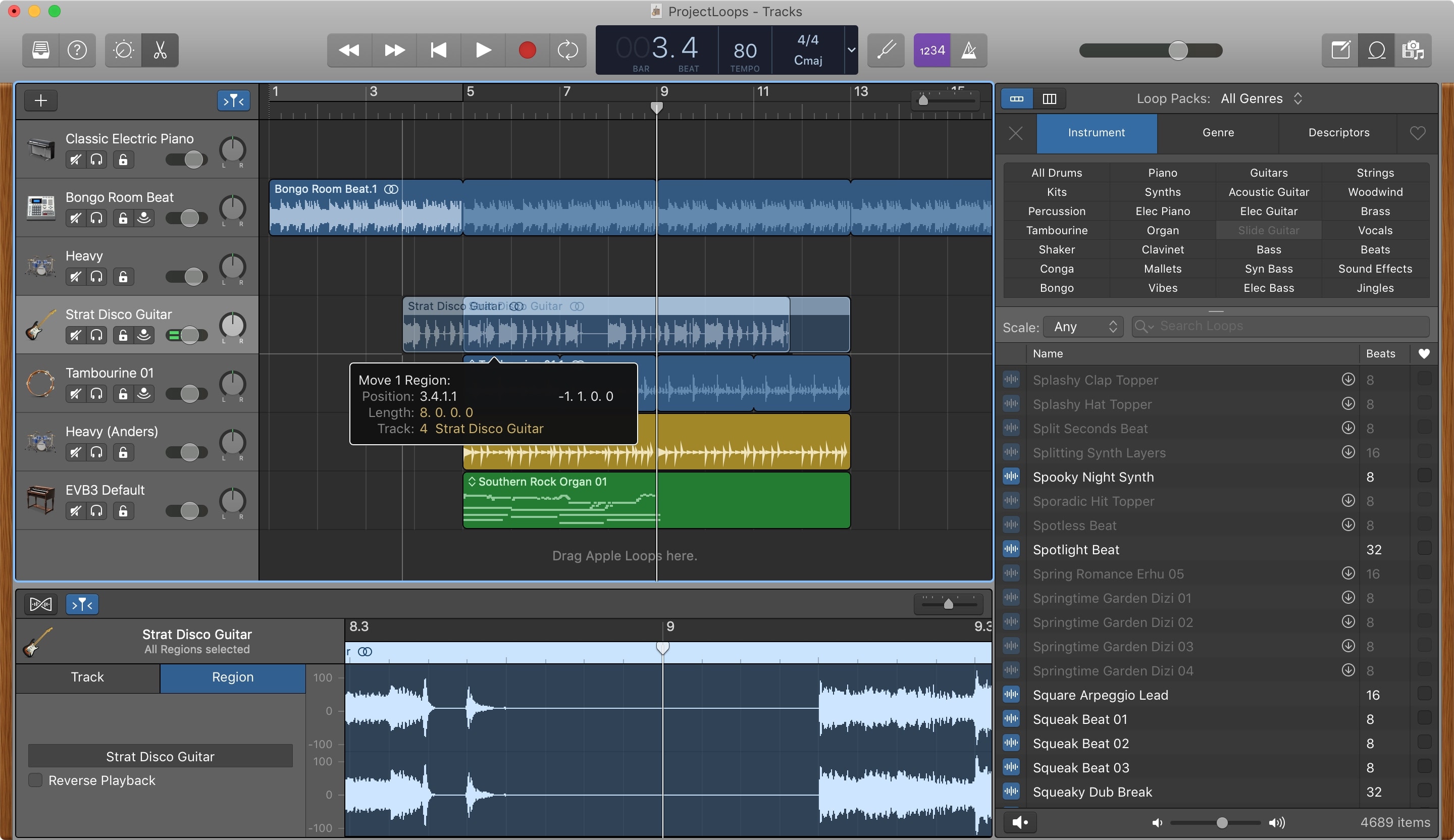

Be sure to check if your favorite free music mixing app is compatible with your computer before clicking download.
#Garageband show tempo Pc
What operating system does your PC run on? Windows? Mac? Linux? Some of these music-making apps are exclusive to a particular OS. Secondly, it is also critical to check the compatibility of your PC before jumping on a DAW. So it is preferable to streamline your needs so you can get the best for that particular function. You can totally get everything you need to create an entire song, clean up audio, mix some beats, and loads of others. Is it just to mash up a sound? Or to create an entire beat? It may sound far-fetched, but the “free” attached to these monster apps does not make them any less effective. And if the original vocal wasn't recorded to a click, that's when you start to need fancy time-stretching and beat matching tools.Before we rush into these astounding free digital audio workstations (DAWs), you have to make some crucial decisions that would guide the selection process.įirst off, you have to decide why you require a free audio maker. Of course there may be challenges in counting if there are long silences in the recording - in this case it might be best to split up the recording and sync each piece separately. The main point of this technique is that if you use the longest section possible of your vocal track to work out the BPM, it minimises error - you're measuring lots of 'beats' all together and then dividing, just like with the paper. if the difference between the markers is 1 minute, and you counted 30 bars of 4/4, then the BPM = (30 * 4) / 1 = 120 BPM. of bars x beats per bar) / time difference in minutesĮ.g. calculate the time difference in minutes between your two markers.count (in your head) how many bars there are between those two points.place another marker on a '1' beat near the end of the solo recording.

place a marker exactly on a '1' beat (first beat of the bar) near the start of the solo recording.load up the solo into an audio editor of your choice (or your DAW might be good enough).We can use a similar trick if we have a long instrumental or vocal solo part that was recorded to a click (or steady beat): If you want to measure the thickness of a piece of paper, that's hard to do with one sheet, but easy if we have 500 sheets - we can measure the total thickness and divide by 500. Far too much of today's 'music production' involves turd-polishing, when a better (and easier) approach would be to go back and record it right in the first place. Though what you're asking for CAN be done, it's turd-polishing (you can polish a turd all you like, but you'll never get a good shine). Much better to re-record the vocals to a click, or (better) to a dummy drum track. But however skilfully done, you'll hear the artefacts.

This will involve slicing it into chunks, moving and/or time-stretching each one to get it 'on the beat'. Fool around with the vocal track to tweak it into a steady tempo. When you program a beat over that, you'll just get what sounds like a drummer who can't keep time! Not a very good groove. It IS possible to align a sequencer tempo map to such a recording, either manually, by entering individual tempo changes, or with some degree of automation - though I think you'll need a more advanced program than Garage Band for that. In fact, unless it was specifically recorded against a click, it's almost certain its tempo varies.

It seems that your vocal track wasn't recorded at a constant tempo. Despite the commented objection to the answer above from winsly, he may have the right idea.


 0 kommentar(er)
0 kommentar(er)
